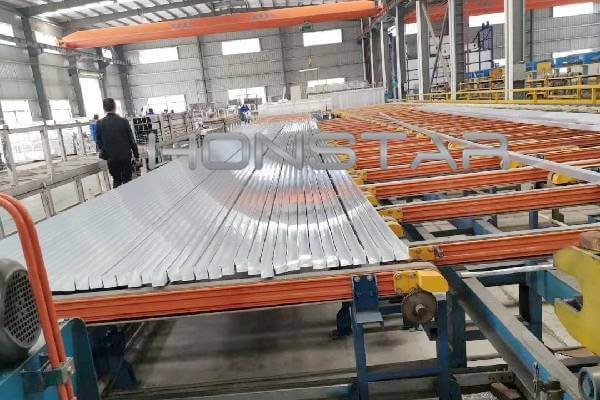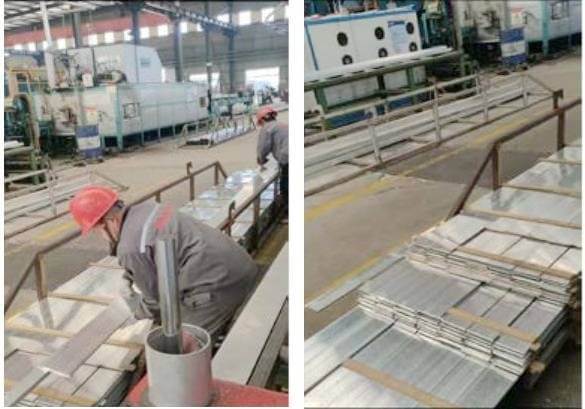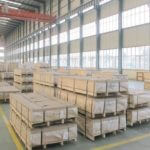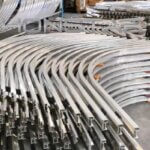Key points of production control for thin wall thickness aluminum profiles
Key points of production control for thin wall thickness aluminum profiles
The thin wall thickness aluminum profiles produced by the company have a wall thickness of less than 1 mm, which is easy to be scratched, deformed and twisted during the production process.
In order to ensure the surface quality of aluminum profiles, the following technical requirements are made for thin wall thickness aluminum profiles.
Here are 8 key points of production control for thin wall aluminum profiles
1. The sampling of aluminum profiles
Sampling is checked against the size of the drawing.
The wall thickness is strictly controlled, use a vernier caliper to check whether it is qualified.
During the production process, it is necessary to re-inspect aluminum profile many times to confirm that the size is qualified.
2. Mold
Because the surface is required to be bright, the mold polishing work has been improved
Summarized a set of polishing experiences and polishing the porthole with the tools, and the test proved that the effect is good, and the surface quality of aluminum profile has been significantly improved.
After the production, timely Nitriding the mold to prepare for the next production.
3. Pre-production preparations
Because the wall thickness of aluminm profile is thin and easy to be scratched.
In order to avoid aluminum profile from being scratched on the run-out table and the cooling bed, it is necessary to adjust the roller level of the run out table and the cooling bed to ensure that aluminum profiles are consistently produced.
4. Extrusion process
In order to ensure the surface quality of aluminum profile, the “three temperatures” of the extrusion must be well controlled.
The temperature of aluminum billet is measured between 475-490°, the temperature of the container is set between 390-405°, and the temperature of the mold is 520°.
Reasonably adjust the extrusion speed according to the surface quality of aluminum extrusion and the progress of the straightening process.
Properly adjust the thickness of the discard to prevent bringing impurities and alumina into the mold cavity and affecting the surface quality.
5. Surface control at the outlet port and the initial run out
From the outlet port to the cooling bed, attention should be paid to defects such as scratches on the bottom surface, carbon black, yellow felt, oil stains, etc.;
The rollers of high-temperature resistant felt distance at the saw table should be close to prevent bending and deformation of thin-walled aluminum extrusion;
The support rollers at the outlet port should not be too high, to avoid scratching the bottom of aluminum profile on the roller when the discard is sheared after extrusion;
After cutting, pay attention to manual pulling to prevent aluminum profile from being deformed after losing the traction force of the puller.
6. Production control at the cooling bed
The aluminum profiles on the cooling bed should not be in direct contact with each other, and aluminum profiles should be avoided from being collided and scratching.
Reasonably adjust the time for aluminum profile cutting so that each aluminum profile is spaced apart, and the distance between aluminum profiles is about 15cm.
7. The control of straightening and sawing processes
Pay attention to the straightening strength.
The aluminum profiles are placed straightly on the stacker and straightened to avoid bending and twisting after straightening.
When sawing the finished product, the operator should wear clean protective gloves to fix the aluminum profile firmly.
The finished saw table should be blown aluminum chips in time to avoid scratching the surface of aluminum profile due to aluminum chips.
After sawing, check whether there are any scratches, bubbles and other defects on the surface of aluminum profile.
8. Control of aluminum profile framing
When the straightening operator load aluminum profiles into the profile frame, the special lifting tool is used to lift aluminum profile materials.
The use of lifting tooling can effectively improve the surface quality and avoid the deformation of the profile.
It can hold 8 pieces at a time and improve production efficiency.
Before aluminum profile is put into the frame basket, put the spacing strips at an interval of about 50cm;
After sawing, observe the quality of the end, each layer of aluminum profile must be blown and cleaned.
The height of aluminum profile should not be higher than the upper edge of the frame to prevent crushing and scratching when hanging the frame and stacking the frame.
Leave appropriate gaps between aluminum profiles to facilitate ventilation and aging.
After multiple production verifications, the surface quality has been significantly improved, meeting the customer’s surface quality requirements.
Honstar Aluminum Products Co., Ltd has been an aluminum industry leader for over 12 years in manufacturing precision aluminum parts, custom aluminum extrusions and standard aluminum extrusions.
We focus exclusively on producing the smallest, most complex, precision aluminum parts, custom aluminum extrusions, standard aluminum extrusions and floor covering aluminum profiles.
Contact us now for your aluminum profile order, and offer the total solution and one-stop service for your request.











